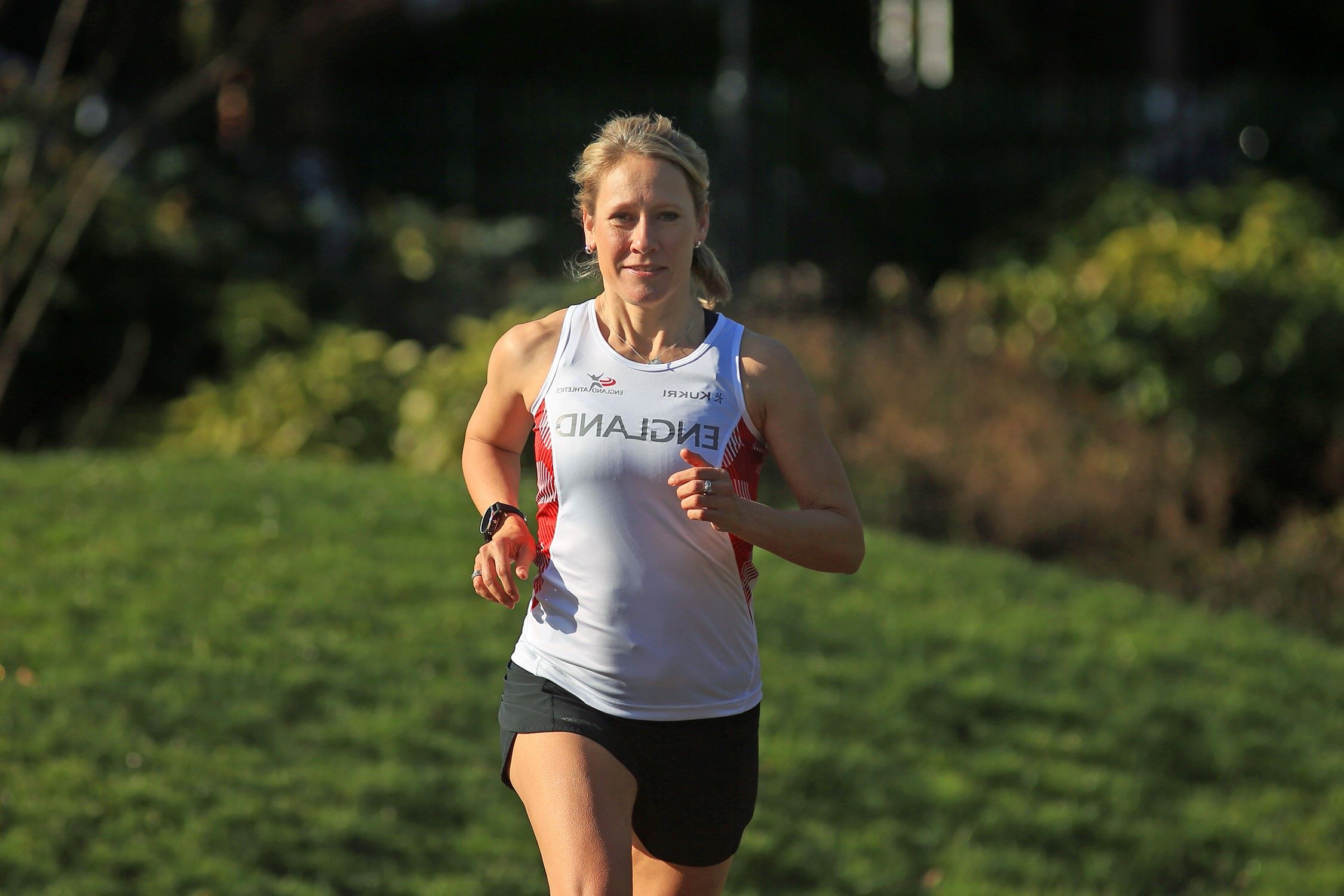Home>Training & Techniques>Training Plans>Discover The Perfect Training Program For Running


Training Plans
Discover The Perfect Training Program For Running
Published: February 29, 2024
Find the ideal training plans for running to improve your performance and reach your fitness goals. Explore personalized programs for all levels of runners.
(Many of the links in this article redirect to a specific reviewed product. Your purchase of these products through affiliate links helps to generate commission for Therunningadvisor.com, at no extra cost. Learn more)
Table of Contents
Understanding the Basics of Running Training
Running is a fantastic way to improve cardiovascular fitness, build endurance, and boost overall health. Whether you're a beginner looking to complete your first 5K or an experienced runner aiming for a marathon, a well-structured training program is essential for success. Understanding the basics of running training is the first step toward achieving your fitness goals.
Importance of Running Training
Running training involves more than just putting on your shoes and hitting the pavement. It encompasses a strategic approach to gradually increasing mileage, improving speed, and preventing injuries. A well-designed training plan considers factors such as frequency, intensity, duration, and progression to optimize performance and minimize the risk of overtraining.
Components of Running Training
A comprehensive running training program typically includes various components to address different aspects of fitness. These may encompass endurance runs to build stamina, speed workouts to enhance pace, tempo runs to improve lactate threshold, and recovery runs to aid in muscle repair and adaptation. Understanding the purpose of each component is crucial for tailoring your training to meet specific objectives.
Building a Foundation
Before diving into a training program, it's important to establish a solid foundation. This involves gradually increasing your running volume and intensity to allow your body to adapt and become more resilient. Building a foundation not only reduces the risk of injuries but also sets the stage for more advanced training phases.
Understanding Training Cycles
Running training often follows a cyclical pattern, alternating between periods of increased intensity and recovery. These cycles, known as macrocycles, mesocycles, and microcycles, allow for systematic progression while incorporating adequate rest and restorative activities. Understanding the structure of training cycles is essential for balancing workload and recovery to optimize performance.
Listening to Your Body
While training plans provide a framework for progression, it's crucial to listen to your body and adjust accordingly. Recognizing signs of fatigue, muscle soreness, or excessive stress can help prevent overtraining and potential injuries. Flexibility within a training plan allows for modifications based on individual responses and external factors.
Understanding the basics of running training sets the stage for a successful and fulfilling running journey. By grasping the importance of training components, building a strong foundation, comprehending training cycles, and listening to your body, you can embark on a structured and effective training program tailored to your specific needs and aspirations.
Assessing Your Current Fitness Level
Assessing your current fitness level is a crucial starting point when embarking on a running training program. Understanding where you stand in terms of endurance, strength, flexibility, and overall health provides valuable insights for tailoring a training plan that aligns with your capabilities and goals.
Importance of Fitness Assessment
Before diving into a running training program, it's essential to evaluate your current fitness level to establish a baseline. This assessment serves as a reference point for tracking progress and identifying areas that require improvement. By understanding your strengths and weaknesses, you can customize your training to address specific needs, optimize performance, and minimize the risk of overexertion or injury.
Components of Fitness Assessment
A comprehensive fitness assessment for running typically includes various components to gauge different aspects of physical readiness. These may encompass cardiovascular endurance, muscular strength and endurance, flexibility, body composition, and overall health markers. Assessing these components provides a holistic view of your fitness level and aids in identifying areas for targeted improvement.
Assessing Cardiovascular Endurance
Cardiovascular endurance is a key determinant of running performance. Assessing this component involves evaluating your ability to sustain aerobic activity over an extended period. This can be measured through methods such as a timed run, step test, or a submaximal exercise test. Understanding your cardiovascular endurance capacity helps in determining appropriate training intensities and durations.
Evaluating Muscular Strength and Endurance
Assessing muscular strength and endurance is essential for running, as it contributes to overall performance and injury prevention. This assessment may involve exercises such as push-ups, planks, squats, and lunges to gauge upper and lower body strength. Understanding your muscular capabilities guides the incorporation of strength training exercises into your running program to enhance performance and resilience.
Flexibility Assessment
Flexibility plays a vital role in running mechanics and injury prevention. Assessing flexibility involves testing the range of motion in key muscle groups and joints, such as the hamstrings, quadriceps, calves, and hips. Identifying areas of limited flexibility enables the inclusion of targeted stretching and mobility exercises to improve running efficiency and reduce the risk of musculoskeletal issues.
Body Composition Analysis
Understanding your body composition, including muscle mass, body fat percentage, and overall weight distribution, provides valuable insights into your physical condition. This assessment can be conducted through methods such as bioelectrical impedance analysis or skinfold measurements. Recognizing your body composition helps in setting realistic goals and tailoring nutrition and training strategies to support optimal running performance.
Overall Health Markers
In addition to physical fitness assessments, considering overall health markers such as blood pressure, heart rate, cholesterol levels, and any existing medical conditions is crucial. Consulting with a healthcare professional for a comprehensive health evaluation ensures that your running training plan aligns with your overall well-being and minimizes potential health risks.
By thoroughly assessing your current fitness level across these components, you gain a comprehensive understanding of your physical readiness for running training. This knowledge forms the foundation for crafting a personalized training program that addresses your specific needs, maximizes performance potential, and promotes a sustainable and rewarding running journey.
Setting Realistic Running Goals
Setting realistic running goals is a pivotal aspect of a successful training program, as it provides a clear roadmap for progress, motivation, and achievement. Whether you're aiming to complete a specific race distance, improve your personal best time, or simply enhance your overall fitness through running, establishing well-defined and attainable goals is essential for guiding your training journey.
Importance of Goal Setting
Goal setting serves as a powerful motivator, providing a sense of purpose and direction in your running endeavors. By articulating specific objectives, such as completing a 10K race within a certain time frame or consistently running a set distance each week, you create tangible targets to strive toward. This not only fuels your determination and commitment but also instills a sense of accomplishment as you make progress toward your aspirations.
Characteristics of Realistic Goals
Realistic running goals are characterized by their attainability within a given timeframe and the consideration of individual capabilities and circumstances. They are specific, measurable, and relevant to your personal aspirations, ensuring that they are within reach while still challenging enough to inspire growth and improvement. Whether it's increasing weekly mileage, enhancing running pace, or conquering a new race distance, realistic goals are tailored to your current fitness level and progressively push your boundaries.
Long-Term and Short-Term Goals
Effective goal setting encompasses both long-term and short-term objectives. Long-term goals, such as completing a marathon or achieving a specific race time, provide a broader vision for your running journey, guiding your overall training direction. Short-term goals, on the other hand, break down the larger aspirations into manageable steps, such as increasing weekly mileage by a certain percentage or incorporating speed workouts to improve pace. This dual approach allows for continuous progress and momentum while working toward significant milestones.
Flexibility and Adaptability
While setting specific goals is essential, it's equally important to maintain flexibility and adaptability within your goal-setting framework. Recognizing that circumstances may change, and unexpected challenges may arise, allows for adjustments to be made without compromising the overall trajectory of your training. This adaptability ensures that your goals remain relevant and achievable, even in the face of unforeseen obstacles.
Monitoring and Celebrating Progress
Once realistic running goals are established, monitoring progress becomes integral to tracking your advancement and making necessary adjustments. Regularly assessing your performance against set benchmarks provides valuable insights into the effectiveness of your training program and allows for modifications to optimize your trajectory. Additionally, celebrating milestones and achievements along the way reinforces your commitment and boosts motivation, fostering a positive and rewarding running experience.
By setting realistic running goals that are specific, attainable, and adaptable, you lay the foundation for a purposeful and fulfilling training journey. These goals serve as beacons of motivation, guiding your progress, and instilling a sense of accomplishment as you work toward realizing your running aspirations.
Choosing the Right Training Program for Your Needs
Selecting the right training program is a pivotal decision that significantly influences the effectiveness and enjoyment of your running journey. With a myriad of training approaches available, each tailored to different fitness levels, goals, and preferences, it's essential to carefully consider various factors to identify the program that best aligns with your needs.
Understanding Training Program Types
Before delving into the selection process, it's crucial to understand the different types of training programs commonly utilized by runners. These may include beginner-friendly programs designed to build endurance and establish a running routine, intermediate programs focused on performance improvement and race preparation, and advanced programs tailored for experienced runners aiming for specific time goals or competitive achievements. Additionally, specialized programs such as interval training, tempo runs, and long-distance training cater to distinct aspects of running performance.
Assessing Your Goals and Aspirations
The first step in choosing the right training program is to assess your running goals and aspirations. Whether you're aiming to complete a specific race distance, improve your overall fitness, or target a personal best time, aligning the program with your objectives is paramount. For instance, a beginner seeking to build endurance and confidence may opt for a program emphasizing gradual progression and a mix of running and walking intervals, while a seasoned runner with competitive ambitions may gravitate toward a structured program incorporating speed work and race-specific training.
Considering Time Commitment and Flexibility
Another crucial consideration is the time commitment and flexibility required by the training program. Assessing your availability for running, cross-training, and recovery activities helps in selecting a program that fits seamlessly into your lifestyle. Some programs may necessitate a higher weekly mileage and training frequency, while others offer more flexibility in scheduling and workout variations. Understanding your time constraints and preferred training routine aids in identifying a program that can be consistently adhered to without undue strain.
Evaluating Training Program Structure and Progression
The structure and progression of a training program play a significant role in its suitability for individual needs. Assessing the balance between easy runs, speed workouts, long runs, and recovery days within the program provides insights into its comprehensiveness and alignment with your running capabilities. Additionally, evaluating the gradual progression of mileage and intensity helps ensure that the program facilitates sustainable growth while minimizing the risk of overtraining and injuries.
Read more: Discover The Top 9 Running Tracks In The UK
Seeking Professional Guidance and Community Support
For those seeking personalized guidance and support, consulting with a running coach or joining a running group can provide valuable insights and recommendations for selecting the right training program. Coaches can offer tailored advice based on your current fitness level and goals, while running communities provide a supportive environment for sharing experiences and seeking program recommendations from fellow enthusiasts.
By carefully considering these factors and aligning them with your individual needs and aspirations, you can confidently choose a training program that sets the stage for a rewarding and successful running journey. Whether you opt for a beginner-friendly program to kickstart your running endeavors or an advanced program to pursue competitive achievements, the right training program forms the cornerstone of your progress and enjoyment in the world of running.
Incorporating Strength and Cross-Training
In the realm of running, the significance of incorporating strength and cross-training into a comprehensive training program cannot be overstated. While running itself is a superb cardiovascular workout, integrating supplementary activities such as strength training, flexibility exercises, and cross-training modalities contributes to a well-rounded approach that enhances overall performance, reduces the risk of injuries, and fosters long-term sustainability in running endeavors.
Importance of Strength Training
Strength training plays a pivotal role in fortifying the muscles and connective tissues essential for running. By targeting key muscle groups such as the quadriceps, hamstrings, glutes, and core, strength exercises bolster muscular endurance, power, and resilience, thereby improving running efficiency and reducing the likelihood of overuse injuries. Additionally, a stronger musculoskeletal system promotes better running posture and form, leading to enhanced performance and reduced fatigue during runs.
Integration of Strength Exercises
Incorporating strength exercises into a running training program involves a strategic approach that complements running workouts without causing undue strain or fatigue. Bodyweight exercises such as squats, lunges, and planks, as well as resistance training using free weights or resistance bands, are effective in targeting specific muscle groups essential for running. Furthermore, incorporating dynamic movements that mimic running mechanics, such as single-leg squats and lateral lunges, aids in developing functional strength that directly translates to improved running performance.
Cross-Training Benefits
Cross-training, which involves engaging in alternative forms of exercise beyond running, offers a myriad of benefits that complement and enhance running performance. Activities such as cycling, swimming, yoga, and Pilates not only provide a break from the repetitive impact of running but also contribute to overall fitness, muscular balance, and injury prevention. Cross-training activities engage different muscle groups, promote cardiovascular health, and offer mental rejuvenation, thereby fostering a holistic approach to physical well-being.
Flexibility and Mobility
Incorporating flexibility and mobility exercises, such as dynamic stretching, yoga, and foam rolling, is instrumental in maintaining optimal range of motion, muscle elasticity, and joint mobility. These activities aid in preventing muscle tightness, improving running biomechanics, and reducing the risk of common running-related injuries. Moreover, enhancing flexibility contributes to better running efficiency and stride length, ultimately leading to improved performance and reduced muscular fatigue.
Balancing Workload and Recovery
While integrating strength and cross-training activities into a running program yields numerous benefits, it is essential to strike a balance between workload and recovery. Ensuring adequate rest and recovery periods between training sessions allows for muscle repair and adaptation, preventing overtraining and burnout. Additionally, scheduling cross-training activities on non-running days provides a well-rounded approach to fitness while allowing for active recovery and rejuvenation.
By incorporating strength training, flexibility exercises, and diverse cross-training modalities into a running training program, individuals can cultivate a robust foundation that supports enhanced performance, reduced injury risk, and long-term sustainability in their running pursuits. This holistic approach not only fosters physical resilience and muscular balance but also contributes to a more enjoyable and fulfilling running experience.
Monitoring Progress and Making Adjustments
Monitoring progress and making adjustments are integral components of a successful running training program. As you embark on your running journey, tracking your advancements, evaluating your performance, and making necessary adaptations are essential for optimizing training effectiveness and achieving your desired outcomes.
Tracking Performance Metrics
Tracking performance metrics, such as running times, distances, and perceived exertion levels, provides valuable insights into your progress. Utilizing GPS running watches, fitness apps, or simple logbooks allows you to monitor improvements in pace, endurance, and overall performance over time. By consistently recording and analyzing these metrics, you gain a comprehensive understanding of your development as a runner.
Assessing Physical Responses
In addition to quantitative metrics, paying attention to your body's physical responses during and after runs is crucial. Monitoring factors such as muscle soreness, fatigue levels, and recovery times offers valuable cues about the impact of training on your body. Recognizing patterns in physical responses enables you to gauge the appropriateness of training intensities and volumes, guiding adjustments to optimize your running program.
Reflecting on Training Outcomes
Reflecting on training outcomes involves evaluating the achievement of set goals, the quality of workouts, and the overall satisfaction with your running experiences. Assessing whether you've met specific milestones, improved performance in targeted areas, and maintained consistency in training provides a holistic view of your progress. This reflective process informs adjustments to your training plan and helps in setting new objectives aligned with your evolving capabilities.
Making Informed Adjustments
Based on the insights gathered from tracking performance metrics, assessing physical responses, and reflecting on training outcomes, making informed adjustments to your training program becomes a proactive and empowering practice. Adjustments may involve modifying training volumes, altering workout intensities, incorporating recovery periods, or revising goal timelines. These informed adaptations ensure that your training remains dynamic and responsive to your evolving needs and aspirations.
Seeking Professional Guidance
In cases where adjustments require expert input, seeking guidance from running coaches, sports physiologists, or healthcare professionals can provide valuable perspectives and recommendations. Professional insight aids in identifying specific areas for improvement, addressing potential training imbalances, and refining your program to align with your individual progress and goals.
By actively monitoring your progress, assessing physical responses, reflecting on training outcomes, and making informed adjustments, you cultivate a dynamic and adaptive approach to your running training. This iterative process not only optimizes your training effectiveness but also fosters a deeper understanding of your capabilities and potential as a runner.







